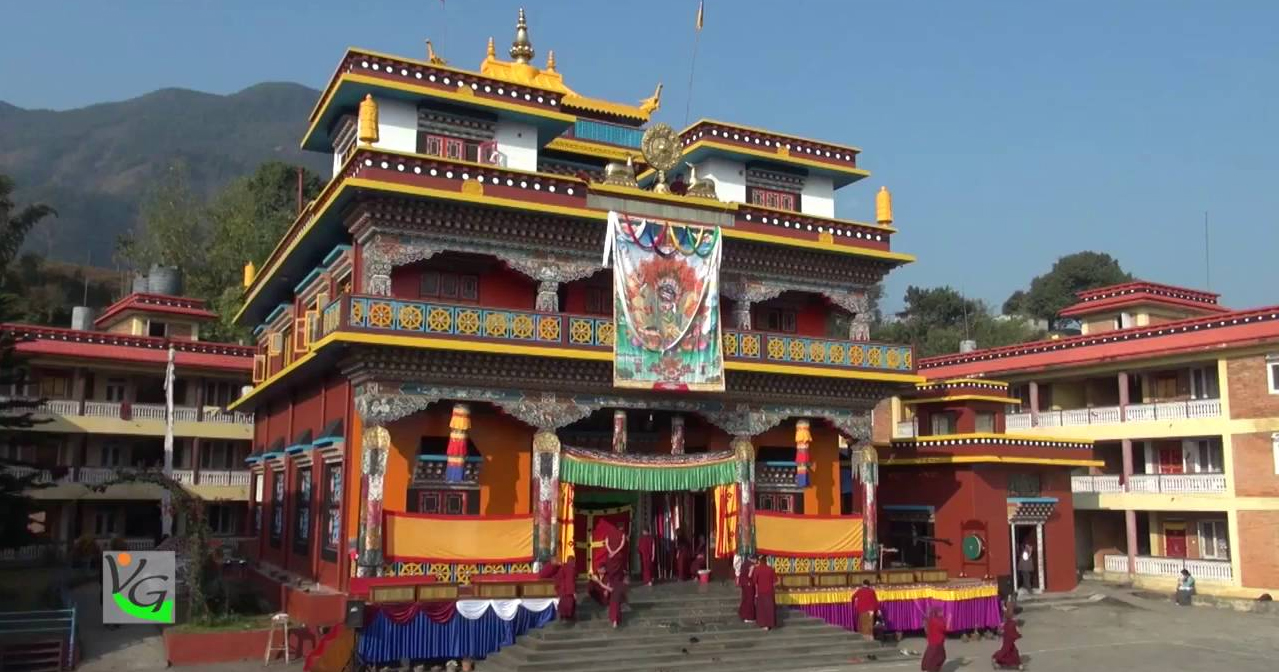Jangchub Choeling Monastery has been one of Pokhara’s most famous and historic monasteries. HH the 14th Dalai Lama founded Jangchub Choeling Monastery in 1967, underneath the supervision of Lama Dupsing Rinpoche. The monastery had been continually extended throughout time as the amenities were improved. The Jangchub Choeling Monastery originally housed only 35 monks, but it has now grown to accommodate hundreds of monks. The Jangchub Choeling Monastery has been able to gather and keep numerous quantities of Kagyu and Tengyur (commentary by the Indian Buddhist Masters) scriptures during the last few years. The Jangchub Choeling Tibetan Monastery is a well-kept monastery in the Pokhara city of Nepal. The monastery is large and tranquil.
The Jangchub Choeling Monastery functions as an educational institution that disseminates information in fields such as philosophy, poetry, and grammar, among others. When you visit one of Pokhara’s most intriguing tourist attractions, you’ll notice the complex design features on the monastery’s walls, as well as numerous artworks.
The monastery is stunning, especially the inside, which is vibrant. Inside the monastery, photography is strictly prohibited. Visiting here will be a memorable experience! Chanting, drums, gongs, trumpets, and bells are all present. They’re loud, but they’re also uplifting. If you wish to discover greater serenity in the monastery, go to the 6 a.m. and 3:30 p.m. prayers, which are quieter and much more meditative and hypnotic. Outside, there is a sign that says no mobile phones or smart phones are allowed during in the prayers. The ceremony lasts two hours, however you are free to leave whenever you choose. Many Tibetans with stalls line the path leading to the monastery; they are quite pleasant and persuasive, so take some money!
History of the Jangchub Choeling Monastery:
Initially, a small and temporary monastery was built to execute Buddhist rituals and rites. Parents began to urge Dupseng Rinpoche to ordain their kids as monks as the number of followers rose. Within a short time, the monastery had grown to 35 monks, including the current Shangpa Rinpoche, a youthful tulku. The monastery was renamed “Jangchub Choeling Monastery” by His Holiness the 14th Dalai Lama in 1967, and the monastic community led by Dupseng Rinpoche was formally recognized. Dupseng Rinpoche transferred the monastery to its current location three years later, recognizing the need for growth. He intended to construct a bigger structure and upgrade the utilities of the monastery. Unfortunately, Dupseng Rinpoche died in 1979. Shangpa Rinpoche has constantly extended and upgraded the monastery’s amenities over the last 20 years.
Divisions of the Jangchub Choeling Monastery:
- The Shrine Hall: Despite being constructed using contemporary building materials, the Shrine Hall displays traditional Tibetan architecture. Inside the hall, there is a 7-foot tall copper and gold-plated Buddha statue.
- 1000 tiny Buddha figurines are depicted on the back of the statue, signifying the 1000 Buddhas proven to exist in this ‘Fortunate Era.’
- Paintings depicting Buddha’s journey of life from birth to Enlightenment may be found on the wall. Mr. Dhawa, a Tibetan artist, created these paintings.
- Portraits of the six ornamentation and two supreme ones that adorn Buddha’s instructions may be found on the right and left sides of the entrance to the building.
- On the walls opposite the Buddha statues, are the portraits of the 16 Arhats who assisted and supported Buddha’s studies after he died.
- The Chief Abbot Shangpa Rinpoche’s apartment and gathering room is located just on the second stage of the Shrine Hall.
- The Lineage Masters’ chapel is located on the third floor. Inside the chapel, you’ll find beautiful clay statues and pictures of the Kagyudpa Traditions’ Lineage Masters.
- In addition, this chapel has 102 books of the Kagyur (Buddha’s word) and 215 books of the Tengyur (commentary by the Indian Buddhist Masters).
How to reach the Monastery: You can take a taxi from lakeside or you can even find a local bus reaching the monastery if you want to save money. The other option is that you can reach to the monastery by walking from the lakeside. The walk will give you the beautiful view of the Pokhara city and you will love the vibes and the atmosphere of the city with every sweat coming out while walking.
Pokhara has a variety of monasteries and Buddhist meditation centers for travelers searching for fascinating locations to visit before or after a hike. There are numerous options to learn more about Tibetan Buddhist culture without having to add additional days to your trip days, from the beautiful temple at Matepani to the serene and cheerful mood at the Jangchub Choeling Monastery, Pokhara gives the experience of all.
If you want to discover true peace and enjoy a beautiful view of the Pokhara city, here is the place to go. This Monastery is teeming with life, including monkeys, birds, and other animals. There is silence everywhere!! and you will definitely love it.
-By: Saru Niraula for Land Nepal

